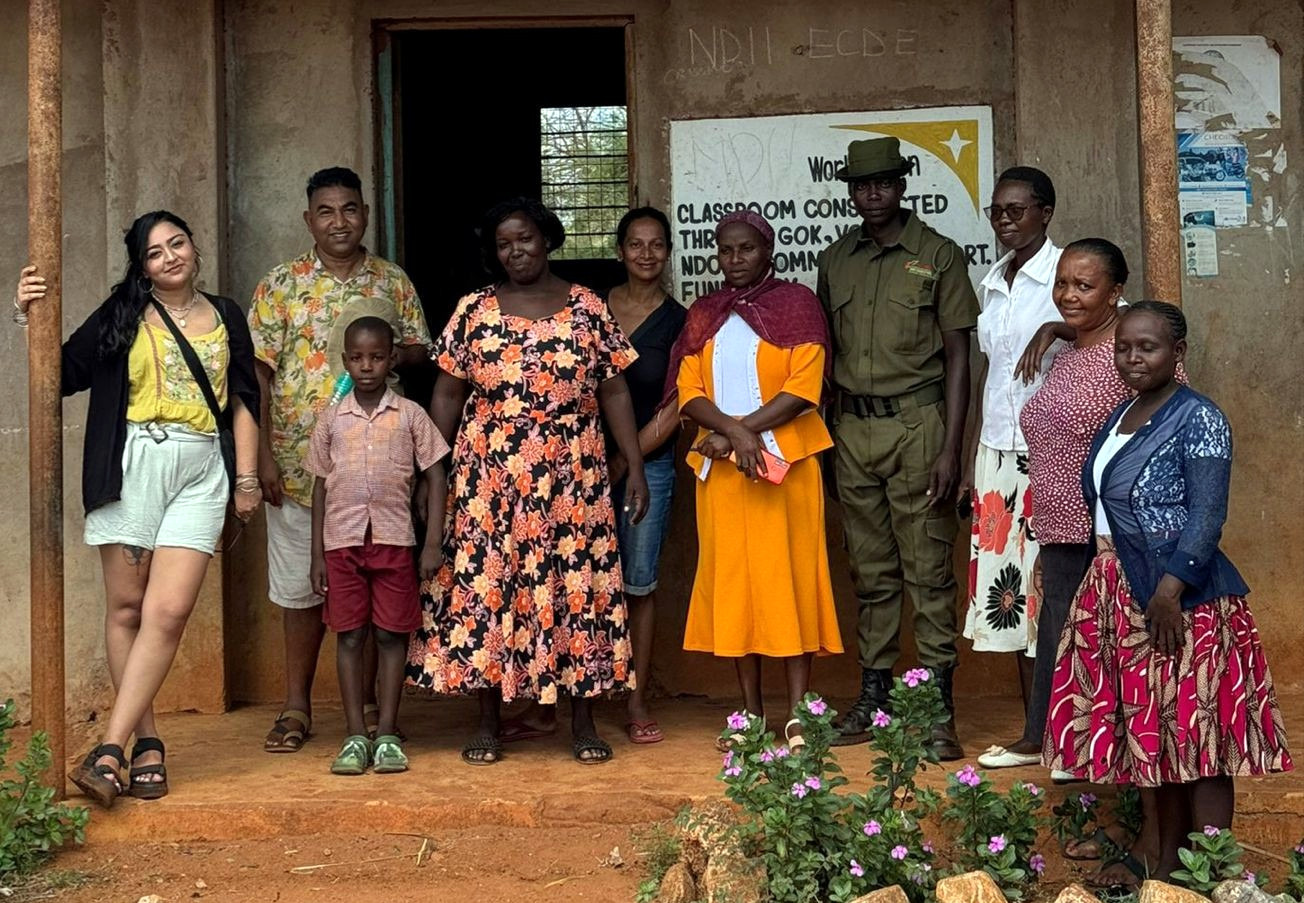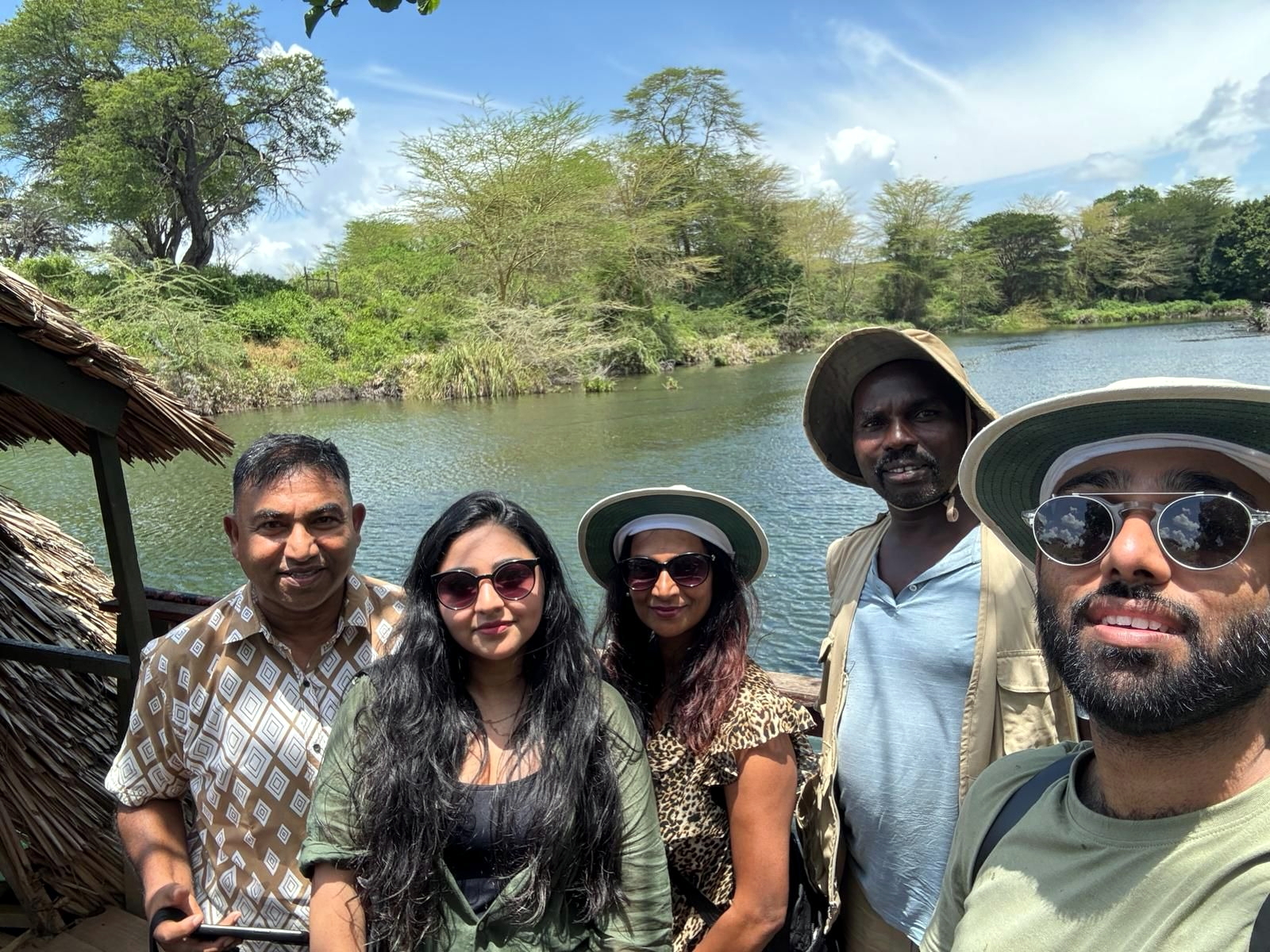GOAN FAMILY REVISITS KENYA-2

Marius Fernandes and his family along with the schoolteachers and staff of Ndii primary school.
PANAJI
Embark on a journey to the heart of Kenya's Tsavo Nature Reserve, where the beauty of the wilderness and the echoes of history converge to create an unforgettable experience.
The adventure began after a whirlwind tour of Nairobi, when my sister Maria Goretti, along with my children Ashley and Gemma, embarked on the next leg of our journey aboard the world-class SGR Madaraka Express bound for Voi station.
With excellent facilities and comfortable seating, the four-hour train ride offered a front-row seat to the magnificent wildlife roaming the plains. From zebras to giraffes, rhinos to deer, each sighting was a glimpse of the wonders awaiting us in Tsavo.
Arriving at Voi station in the late evening, we were greeted by our driver and whisked away to a well-maintained Tausa Tsavo Eco Lodge, where we were personally welcomed by David, the owner, and treated to a delicious dinner.
Consisting of Nyama Choma, the unofficial dish of Kenya which means grilled meat in Swahili it is slow cooked over hot coals until tender. Matoke, a rich stew made from green bananas, tomatoes, onions, garlic and flavoursome spices, while Ugali, the staple Kenyan cuisine, is made of cornmeal. To finish off we had Mandazi, Kenya’s favourite sweet treat.
As dawn broke, we were accompanied by the resort manager, as we set out for Tsavo Reserve in a Land Rover. Along the way, we encountered a plethora of animals, colourful birds, and breathtaking flora and fauna. The manager regaled us with stories of the reserve’s history and ongoing conservation efforts, including the infamous tale of the man-eaters of Tsavo – two lions which was responsible for the deaths of numerous Indian men in 1898.
Man-eaters of Tsavo were a pair of large male lions in the Tsavo region which were responsible for the deaths of many construction workers on the Kenya-Uganda Railway in 1898. They are known to have killed dozens of Indian workers who lived in makeshift tents during the construction and the lions stalked the campsite dragging the workers from their tents late at night. These workers were brought to Kenya specifically to build the railways.
 Marius Fernandes and his family along with David, the manager of Eco Lodge, at the Mzima Springs in Tsavo National Park.
Marius Fernandes and his family along with David, the manager of Eco Lodge, at the Mzima Springs in Tsavo National Park.
After a hearty lunch, we visited the iconic Kilaguni Serena Safari Lodge with a backdrop of Mount Kilimanjaro and witnessed elephants, zebras, buffaloes and other game overlooking its own waterhole.
Kenya's first president, late Jomo Kenyatta, visited this place for its close-up views of wildlife.
We also visited the Mzima underwater Springs (home to hippos and crocodiles) which originate from the Chylus hills. The hills are composed of volcanic lava rocks and ash spreading over 50 kilometres which is a sight to behold.
We were lucky to see the sheer number of baobab trees that have adorned the landscape in Tsavo for over a thousand years.
Tsavo is a combination of two national parks, East and West making it the largest park in Kenya. It is known as the land of Lava, springs, man-eaters and magical sunsets and we were lucky enough to witness it all. As the sun set, we returned to our eco-resort for a feast of African cuisine, savouring the flavour of the land.
The next morning, a visit to the Voi market provided insight into local life at Tvaso market, where we sampled the famed macadamia nuts, baobab and black plums.
A chance encounter with Ndii primary school revealed a heartwarming opportunity for generosity. Moved by the children's plight of running home for lunch during breaks, we pledged support to provide mealtime food for the students, working towards adopting the school for ongoing assistance.
In the end, our journey through Tsavo was not just about experiencing the beauty of nature or the thrill of adventure but also about making a positive impact on the lives of the people and wildlife we encountered along the way. It was a testament to the power of travel to inspire, educate, and uplift both us and communities alike.
[The writer is popularly known as Goa’s Festakar due to his pioneering efforts to revive and promote Goan culture through people-oriented festivals]